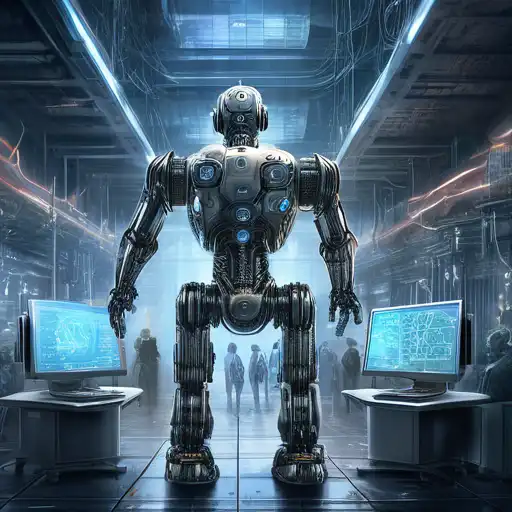Introduction to AI and Machine Learning
In the rapidly evolving world of technology, Artificial Intelligence (AI) and Machine Learning (ML) stand out as two of the most groundbreaking advancements. While often used interchangeably, these terms represent distinct concepts with unique applications and implications. This article delves into a comparative study of AI and ML, shedding light on their differences, similarities, and how they're shaping the future.
Understanding Artificial Intelligence
AI is a broad field of computer science focused on creating systems capable of performing tasks that typically require human intelligence. These tasks include problem-solving, recognizing speech, learning, planning, and more. AI can be categorized into two types: narrow AI, which is designed to perform a narrow task (e.g., facial recognition), and general AI, which can perform any intellectual task that a human can.
Understanding Machine Learning
Machine Learning, a subset of AI, involves the development of algorithms that allow computers to learn from and make decisions based on data. Unlike traditional programming, where humans explicitly code the behavior, ML models improve their performance as they are exposed to more data over time. ML is further divided into supervised learning, unsupervised learning, and reinforcement learning.
Key Differences Between AI and ML
- Scope: AI encompasses a wider range of technologies aiming to simulate human intelligence, whereas ML focuses specifically on enabling machines to learn from data.
- Dependency: AI systems can function without ML, but ML is a pathway to achieving AI.
- Applications: AI applications range from robotics to natural language processing, while ML is widely used in data analysis, predictive modeling, and more.
Similarities Between AI and ML
Despite their differences, AI and ML share common goals, such as automating tasks, improving efficiency, and enhancing decision-making processes. Both fields rely heavily on data and are driving innovations across industries, from healthcare to finance.
How AI and ML Are Shaping the Future
The integration of AI and ML into various sectors is transforming how we live and work. From personalized medicine to autonomous vehicles, the potential applications are limitless. As these technologies continue to evolve, they promise to unlock new possibilities and challenges.
Conclusion
Understanding the distinctions and intersections between AI and ML is crucial for anyone looking to navigate the future of technology. While AI offers a vision of machines that can mimic human intelligence, ML provides the tools to make this vision a reality. Together, they are paving the way for innovations that were once considered the realm of science fiction.
For more insights into the latest tech trends, check out our articles on Data Science and Tech Trends.
